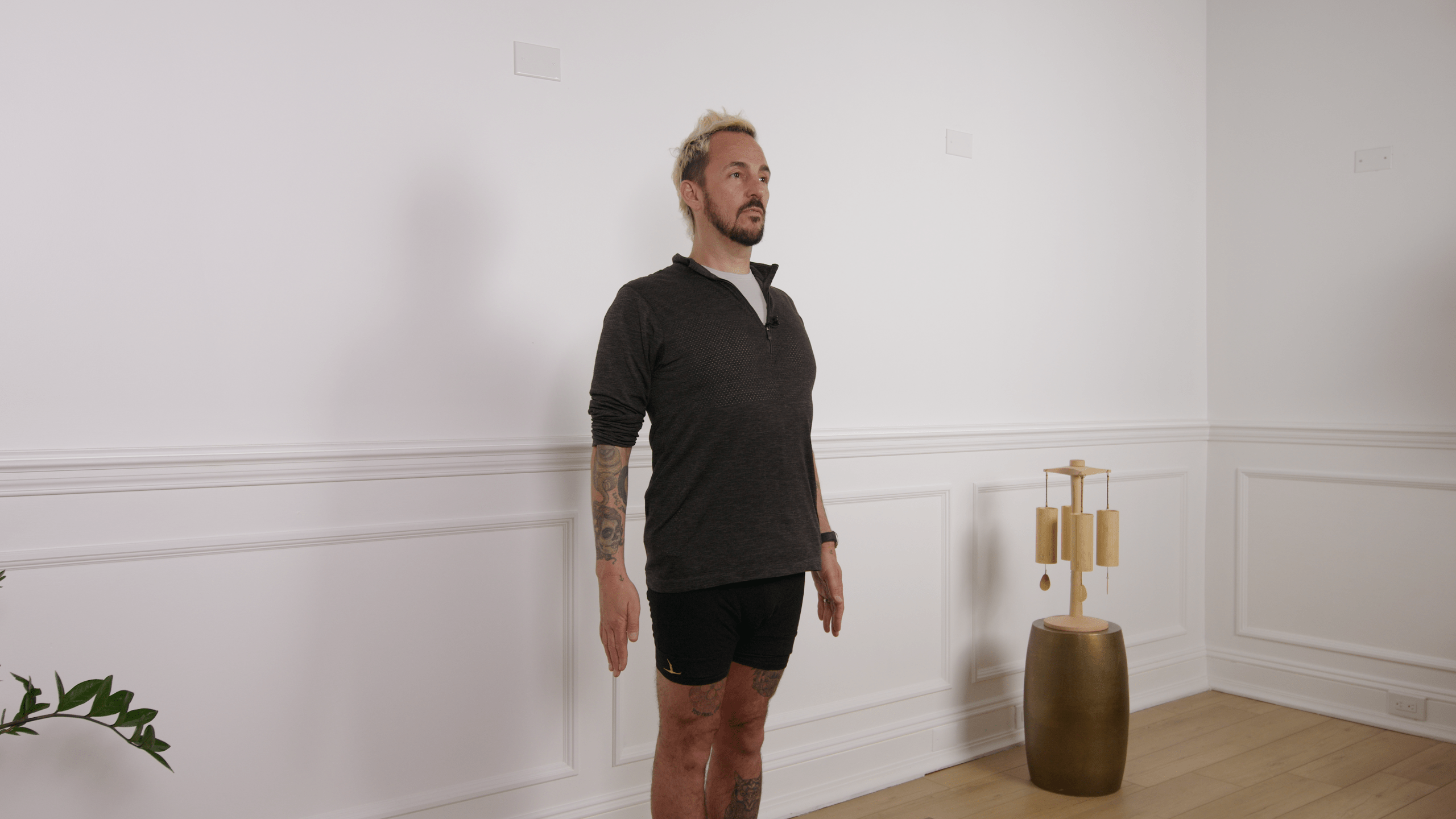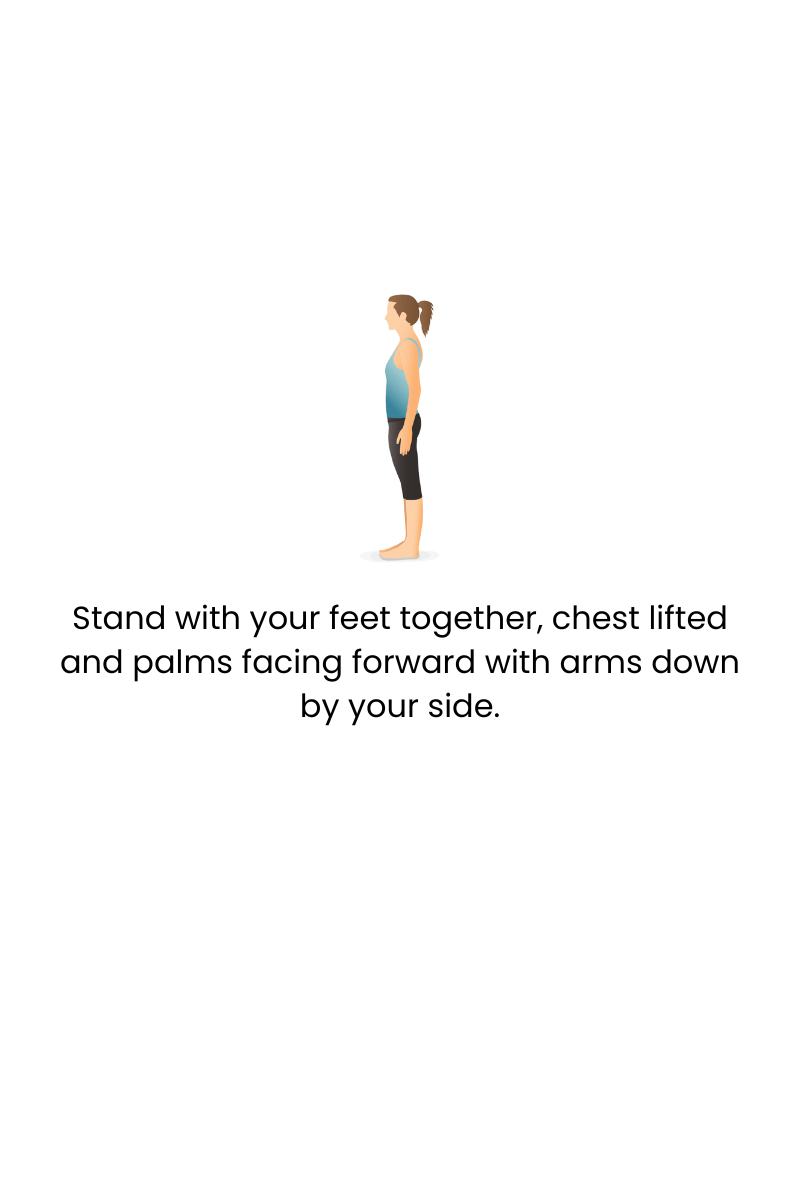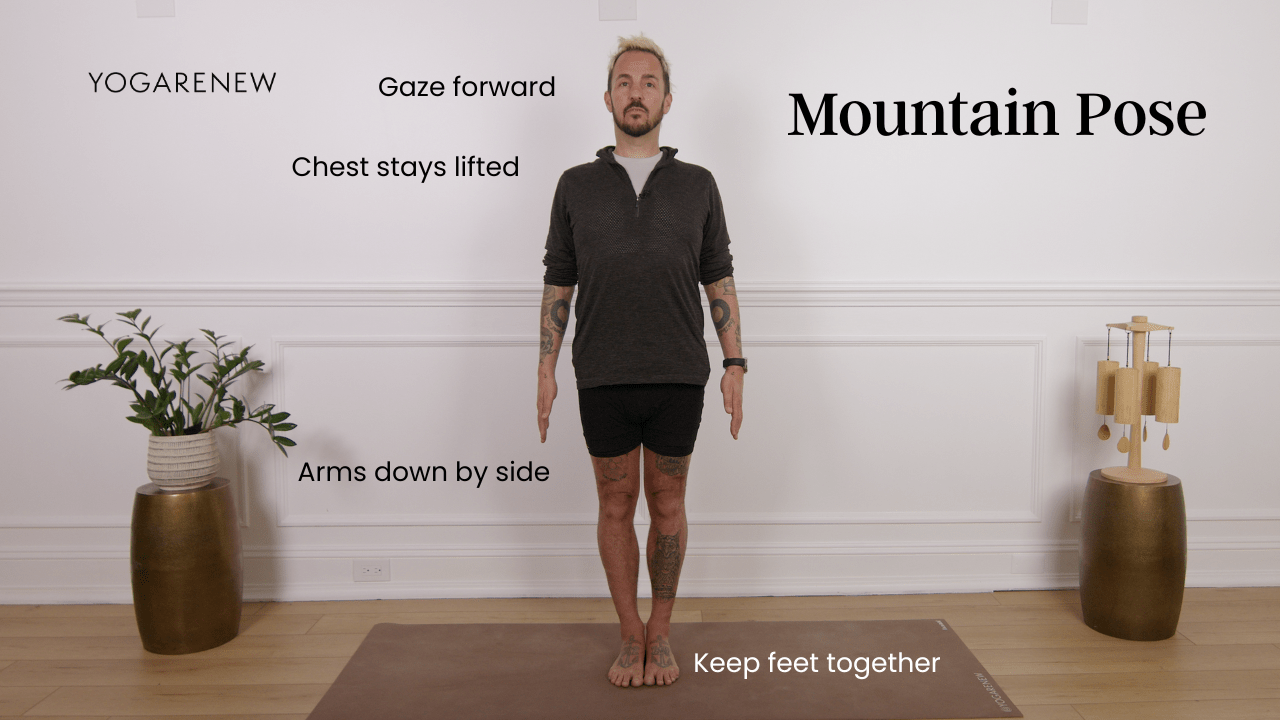What is Mountain Pose?
English Name: Mountain Pose
Sanskrit Name: Tadasana (pronounced tah-DAHS-uh-nuh)
Category: Standing, Foundational, Alignment, Beginner-Friendly

English Name: Mountain Pose
Sanskrit Name: Tadasana (pronounced tah-DAHS-uh-nuh)
Category: Standing, Foundational, Alignment, Beginner-Friendly
Tadasana, or Mountain Pose, is the foundation of all standing postures in yoga. While it may appear simple on the outside, Mountain Pose teaches the art of stillness, grounding, and refined alignment. Practiced with awareness, it awakens the entire body—from the soles of the feet to the crown of the head.
Far more than “just standing,” Mountain Pose develops posture, presence, and the subtle engagement that supports balance, strength, and mindfulness in every pose that follows. It is both a destination and a beginning.


Mountain Pose is the blueprint for standing poses and a powerful anchor for any yoga practice. Tadasana teaches us how to stand with attention and intention—revealing the strength in simplicity. When practiced mindfully, it creates a steady connection between the earth and the breath, aligning body and mind in the present moment. It’s a reminder that even in stillness, we are active, aware, and alive.
Yes! Though subtle, it’s a foundational asana that sets the stage for all standing postures.
Widen your stance and keep your gaze fixed on a point. Over time, balance improves.
Absolutely. It’s a great daily practice for posture, presence, and grounding.

Explore classes & pose tutorials for any style, format, duration or experience level with a free account in the YogaRenew app. Or subscribe and gain access to workshops, live classes and more.